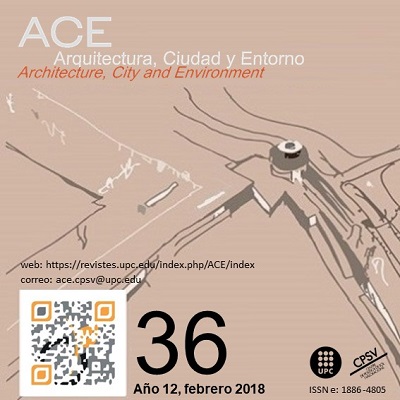Informal occupation of urban space; locations, characteristics and determining factors in the city of Cordoba, Argentina 1990-2010
DOI:
https://doi.org/10.5821/ace.12.36.4800Keywords:
Land access, informal urban typologies, territorial transformationsAbstract
Objective
This article aims to characterize and define the level of Cordoba’s ‘urban informality’ (housing developments that arise without conforming to urban and/or legal codes). It will establish similarities and differences between the types of such housing and their development between 1990 and 2010.
Methodology
The article methodically analyses secondary data sources on the three housing situations: ‘Slums‘, ‘Land occupation’ and ‘fraudulent allotments’, which characterize, conceptualize and measure urban informality in Cordoba. This evolution and the territorial changes were processed according to the predetermined period (1990-2001 and 2001-2010) and logged on the GIS database.
Conclusions
Each informal category acquired an urban form related to the occupation of the land and its territorial trajectory. These informal situations became permanent which imply that the actions against them have not been effective. It also shows that the new generations have the same difficulties as the previous one while trying to access to land and housing, thus being informality the only solution to the housing problem.
Originality
Cordoba does not have a historical and systematic record of informal occupancy – which seems to be a topic not dealt by any public policies. However, these housing situations remain, being diverse and complex. Therefore, their study continues to be paramount in order to create more efficient and inclusive cities. The results of this work come together to allow you to understand the process of informal occupancy, explaining its' endurance and identifying the factors involved, both helping to understand, manage and solve this problem.
Downloads
Published
Issue
Section
License
| INTELECTUAL PROTECTION CRITERIA |
At this moment, it is count with the "Oficina Española de Patentes y Marcas", while global protection it is being processed by the World Intelectual Property Organization (OMPI/WIPO). Nevertheless the International Standard Serial Number Office (ISSN) has given the following numbers ISSN: 1886-4805 (electronic version) and 1887-7052 (paper version). All articles will be peer reviewed, using double blind reviewing. |
| COPYRIGHT |
The article contents and their comments are authors exclusive liability, and do not reflect necessarily the journal editor commitee's opinion. All ACE published works are subject to the following licence CC BY-NC-ND 3.0 ES http://creativecommons.org/licenses/by-nc-nd/3.0/es/ It implies that authors do not hold nor retain the copyright without restrictions but only those included in the licence. |


































